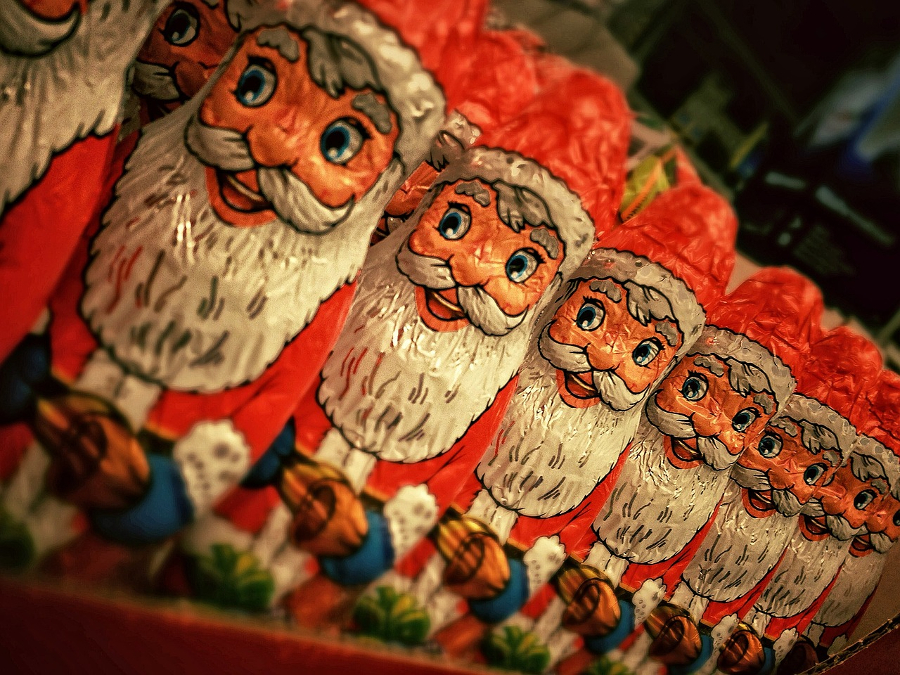The History Of Christmas
 On December 25, people around the world celebrate Christmas. Some people celebrate by giving gifts. Children may be thanking Santa Claus for new toys. They may also be going to church with their families. Christmas has so many traditions and symbols associated with it that it's hard to determine exactly how it came to be the celebration it is today.
On December 25, people around the world celebrate Christmas. Some people celebrate by giving gifts. Children may be thanking Santa Claus for new toys. They may also be going to church with their families. Christmas has so many traditions and symbols associated with it that it's hard to determine exactly how it came to be the celebration it is today.
Christmas has been celebrated around the globe for millennia with practices and traditions both religious and secular. Christians celebrate it as the anniversary of the birth of Jesus. Winter solstice festivals were very popular in many European pagan cultures, marking the day when the worst of winter was over and the beginning of longer days and extended hours of sunlight. The Norse celebrated Yule. In Germany the pagan god Oden was honored.
By 336 A.D., the Christian church in Rome celebrated the festival of Christmas on December 25. The same day, Romans celebrated Saturnalia, the winter solstice (the shortest day of the year). In observance of the “birthday of the unconquered sun”, they exchanged gifts and made merry with a festival. On the Roman New Year (January 1), people decorated houses with greenery and gave gifts to children and the poor. Evergreens were a symbol of survival.
Pope Julius I chose December 25 to celebrate the “Feast of the Nativity” (later renamed “Christmas”) in an effort to absorb the traditions of the Saturnalia pagan celebration. By the Middle Ages Christianity had successfully replaced many pagan religions, but pagan traditions continued. Christmas activities included going to church followed by carnival-like celebrations similar to modern day Mardi Gras. It was a time when the rich would repay their debts to society. Poor people would visit wealthy homes to demand food and alcohol. Families failing to comply were subjected to mischief. Students and beggars were given the title “lord of misrule”, while others acted as their subjects.
Christmas was not celebrated in early America as the pilgrims were opposed to the holiday's decadence. From 1659 to 1681 it was outlawed in Boston. Following the American Revolution, all English customs were unpopular.
Christmas did not become a federal holiday in the United States until 1870. It was transformed from a raucous celebration into a day of peaceful nostalgia, inspired by “The Sketchbook of Geoffrey Crayon, gent.” written by Washington Irving, and “A Christmas Carol” by Charles Dickens. While these writings incorporated many pagan traditions, they were re-imagined into more peaceful, tamer activities. Victorian society was also becoming more sensitive to the needs of children, and the reinvented holiday allowed them a time to give attention and presents to children.
Modern-day Christmas borrows many ancient traditions. St. Nicholas became a popular figure by the 11th century, known for his great generosity and healing powers. With the rise of the Protestant Church, he was nearly forgotten, except in the Netherlands where they called him Sinterklaas. Dutch colonists settling in New Amsterdam (now New York City) brought the story of St. Nicholas with them. In English, he became known as Santa Claus. Added to the legend of this kind old man were old Nordic folk tales of a magician who punished naughty children and rewarded good children with presents. The Santa Claus we recognize in the U.S. today, with his red suit, jolly laugh, and long white beard, began to appear in story and song in the 19th century.
Santa Claus delivering gifts originated from Holland’s St. Nicholas’ feast day on December 6 when children would leave shoes out the night before and find gifts in them from St. Nicholas the next morning. Santa's flying sleigh was created by Washington Irving in 1819. Originally dressed in green, purple or blue, Coca Cola changed Santa's colors to match their brand.
Montgomery Ward department store created Rudolph the Reindeer to encourage children to purchase Christmas coloring books. Eight additional reindeer were create in a poem by Clement Moore: Dasher, Dancer, Prancer, Vixen, Comet, Cupid, Duner and Blixem (later evolving into Donner and Blitzen).
Christmas trees may date back to pagan traditions. Bringing cuttings of evergreens indoors during the winter was an ancient tradition to combat seasonal affected disorder. “Yule trees” were first used in 16th century Germany, decorated with fruits and nuts.
Eggnog was created in the Jamestown settlement in 1607. Tinsel was created in 1610 in Germany, originally made of real silver.
The hanging of stockings is a Dutch tradition created from a legend of a poor man with three daughters that he could not afford a dowry for. St. Nicholas dropped a bag of gold down his chimney. Gold coins fell out of the bag and into stockings hanging by the fireplace to dry. The gold coins provided the daughters with dowries so they could be married and avoid a life on the streets. 12th century nuns also left socks full of fruits and nuts at the doors of the poor.
Carolling is taken from an English custom of wassailing to toast someone’s good health and fortune. St. Francis of Assisi adapted the tradition to create carolling. Many Christmas songs have been written by Jews.
Before electric Christmas lights, families would use candles to light up their Christmas trees. This practice was often dangerous and led to many home fires. Edward H. Johnson put the very first string of electric Christmas tree lights together in 1882. Johnson, Thomas Edison’s friend and partner in the Edison’s Illumination Company, hand-wired 80 red, white and blue light bulbs and wound them around his Christmas tree. Not only was the tree illuminated with electricity, it also revolved. However, the world was not quite ready for electrical illumination. There was a great mistrust of electricity and it would take many more years for society to decorate its Christmas trees and homes with electric lights.
Some credit President Grover Cleveland with spurring the acceptance of indoor electric Christmas lights. In 1895, President Cleveland requested that the White House family Christmas tree be illuminated by hundreds of multi-colored electric light bulbs. On Christmas Eve 1923, President Calvin Coolidge began the country’s celebration of Christmas by lighting the National Christmas Tree with 3,000 electric lights on the Ellipse located south of the White House.
Until 1903, when General Electric began to offer pre-assembled kits of Christmas lights, stringed lights were reserved for the wealthy and electrically savvy. The wiring of electric lights was very expensive and required the hiring of the services of a wireman, our modern-day electrician. According to some, to light an average Christmas tree with electric lights before 1903 would have cost $2000.00 in today’s dollars.
